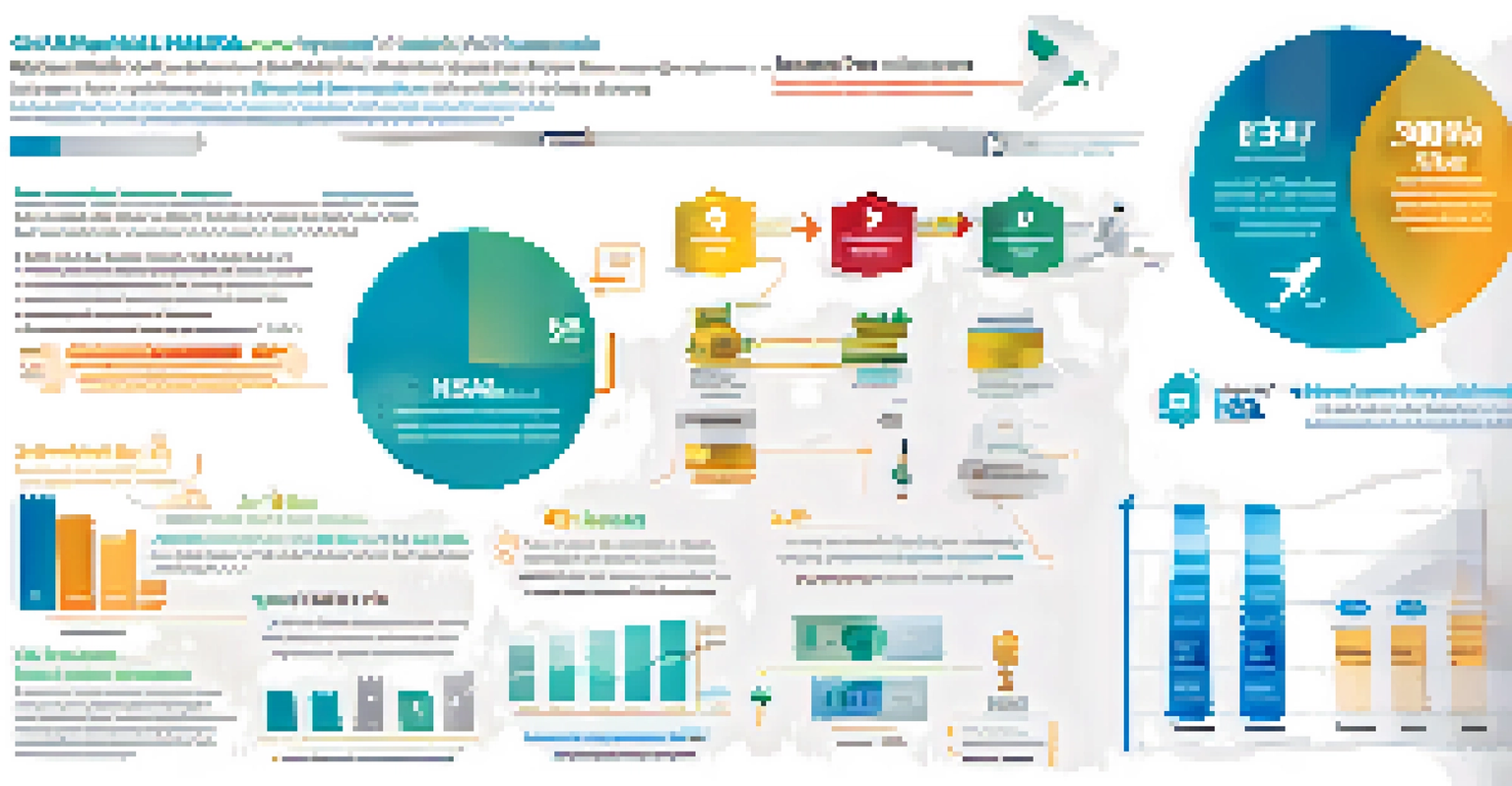Tax Benefits of Health Savings Accounts (HSAs) Explained

What is a Health Savings Account (HSA)?
A Health Savings Account (HSA) is a tax-advantaged account designed to help individuals save for medical expenses. To qualify for an HSA, you must be enrolled in a high-deductible health plan (HDHP). This means your insurance has higher deductibles and lower premiums, which can lead to significant savings.
The best way to predict the future is to create it.
HSAs are unique because they allow you to set aside pre-tax dollars specifically for healthcare needs. This means the money you contribute reduces your taxable income, providing immediate tax benefits. For many people, it’s a strategic way to save for both current and future medical expenses.
In addition to tax savings, HSAs offer the flexibility of rolling over unused funds from year to year. Unlike flexible spending accounts (FSAs), which often have a 'use-it-or-lose-it' policy, HSAs let you build a nest egg for healthcare, allowing you to plan ahead for larger expenses.
Tax Deductions on HSA Contributions Explained
One of the primary tax benefits of HSAs is the ability to deduct contributions from your taxable income. For the tax year 2023, individuals can contribute up to $3,850, while families can contribute up to $7,750. If you're over 55, there's an additional catch-up contribution of $1,000, which can further enhance your tax savings.

This deduction means that the more you contribute, the less you owe in taxes at the end of the year. For example, if you contribute the maximum amount as an individual, you could lower your taxable income significantly, which may push you into a lower tax bracket.
Tax Benefits of HSAs
HSAs provide significant tax advantages, including pre-tax contributions that lower your taxable income and tax-free growth on funds.
Keep in mind that contributions must be made by the tax filing deadline to qualify for that tax year. This flexibility allows you to plan your contributions strategically, ensuring you maximize your deductions effectively.
Tax-Free Growth of HSA Funds
Another appealing feature of HSAs is the tax-free growth on the funds within the account. When you invest the money in your HSA, any interest or investment earnings are not subject to taxes. This means your savings can grow more quickly compared to taxable accounts.
It's not about what you earn, but what you keep that counts.
Imagine your HSA as a garden; the contributions are the seeds you plant, and the tax-free growth is the sunlight and water helping those seeds flourish. Over time, the compound growth can significantly increase your available funds for medical expenses.
This tax-free growth continues as long as the money remains in the account, which means you can enjoy compounded returns without the worry of tax erosion. It’s a powerful incentive to keep your HSA funded and invested wisely.
Tax-Free Withdrawals for Qualified Medical Expenses
Withdrawals from your HSA for qualified medical expenses are completely tax-free. This includes a wide range of expenses, from doctor visits and prescription medications to dental care and mental health services. The IRS maintains a list of what qualifies, but generally, if it’s a healthcare-related expense, it’s likely covered.
This feature makes HSAs particularly beneficial for individuals and families who anticipate significant medical costs. For example, if you have a high deductible or unexpected medical emergencies, having funds in your HSA allows you to pay for these expenses without incurring additional tax liabilities.
Flexibility for Medical Expenses
Withdrawals for qualified medical expenses are tax-free, offering a financial cushion for unexpected health costs.
Think of it as a financial cushion for your health; not only can you save money on taxes, but you can also use those tax-free funds to cover health costs without financial strain.
Using HSAs for Retirement Savings
While HSAs are primarily designed for healthcare expenses, they can also serve as a smart retirement savings tool. After age 65, you can withdraw funds for any purpose without penalties, though non-medical withdrawals will be taxed as regular income. This flexibility makes HSAs a dual-purpose account.
Consider it like a Swiss Army knife for your finances; it’s not just for one purpose. You can use it for medical expenses during your working years and then pivot to retirement savings as you age. This flexibility can be a game-changer for your long-term financial planning.
Additionally, the funds can continue to grow tax-free even after you retire, which means your HSA can potentially serve as an extra layer of financial security during your retirement years.
Contribution Limits and Eligibility Rules
Understanding HSA contribution limits and eligibility is crucial for maximizing benefits. As mentioned earlier, the annual contribution limits for 2023 are $3,850 for individuals and $7,750 for families, with an extra $1,000 for those over 55. These limits are adjusted each year, so it’s important to stay informed.
Eligibility to contribute to an HSA is tied to your enrollment in a high-deductible health plan. This means you cannot be covered by other health insurance, including Medicare. If you’re unsure whether you qualify, it’s a good idea to check with your health insurance provider.
HSAs as Retirement Savings Tools
After age 65, HSAs can also be used for retirement expenses, providing a dual-purpose financial resource.
By understanding these limits and rules, you can ensure that you’re making the most of your HSA contributions and maximizing your tax advantages. Planning ahead can help you navigate these requirements smoothly.
Common Misconceptions About HSAs
Despite their advantages, there are some common misconceptions about HSAs that can deter individuals from utilizing them. One frequent myth is that HSAs are only beneficial for the wealthy. In reality, anyone with a high-deductible health plan can open an HSA, making it accessible to a broad range of individuals.
Another misconception is that HSAs are only for short-term medical expenses. In truth, they can be a long-term savings vehicle, especially when used strategically for retirement. Many people overlook the potential for tax-free growth and the flexibility of using funds later in life.

By debunking these myths, you can better appreciate the value of HSAs in your financial and healthcare planning. Understanding their true potential can empower you to make informed decisions about your health expenses.